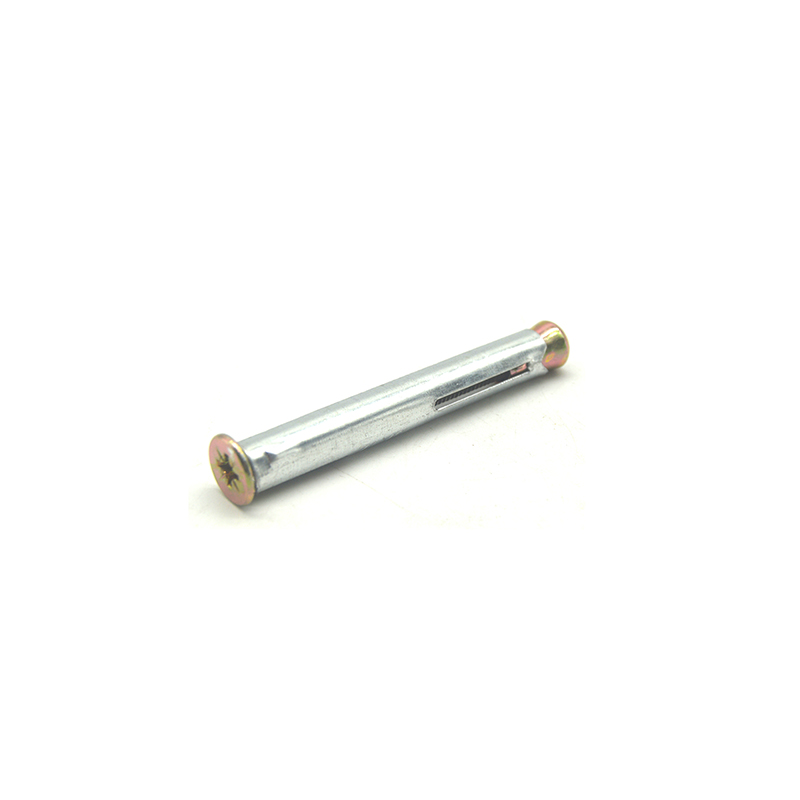- English
- Chinese
- French
- German
- Portuguese
- Spanish
- Russian
- Japanese
- Korean
- Arabic
- Irish
- Greek
- Turkish
- Italian
- Danish
- Romanian
- Indonesian
- Czech
- Afrikaans
- Swedish
- Polish
- Basque
- Catalan
- Esperanto
- Hindi
- Lao
- Albanian
- Amharic
- Armenian
- Azerbaijani
- Belarusian
- Bengali
- Bosnian
- Bulgarian
- Cebuano
- Chichewa
- Corsican
- Croatian
- Dutch
- Estonian
- Filipino
- Finnish
- Frisian
- Galician
- Georgian
- Gujarati
- Haitian
- Hausa
- Hawaiian
- Hebrew
- Hmong
- Hungarian
- Icelandic
- Igbo
- Javanese
- Kannada
- Kazakh
- Khmer
- Kurdish
- Kyrgyz
- Latin
- Latvian
- Lithuanian
- Luxembou..
- Macedonian
- Malagasy
- Malay
- Malayalam
- Maltese
- Maori
- Marathi
- Mongolian
- Burmese
- Norwegian
- Pashto
- Persian
- Punjabi
- Serbian
- Sesotho
- Sinhala
- Slovak
- Slovenian
- Somali
- Samoan
- Scots Gaelic
- Shona
- Sindhi
- Sundanese
- Swahili
- Tajik
- Tamil
- Telugu
- Thai
- Ukrainian
- Urdu
- Uzbek
- Vietnamese
- Welsh
- Xhosa
- Yiddish
- Yoruba
- Zulu
- Kinyarwanda
- Tatar
- Oriya
- Turkmen
- Uyghur

125mm drywall स्क्रू
125mm Drywall Screws बुझ्दै
संग समात्दै 125mm drywall स्क्रू विशेष गरी नवीकरण वा निर्माणमा गहिरो भएकाहरूका लागि यो एउटा सूक्ष्म विषय हुन सक्छ। यी स्क्रूहरू धेरै परियोजनाहरूमा मुख्य हुन्, तर तिनीहरूको प्रयोग र प्रभावकारिताको बारेमा सामान्य गलत धारणाहरू छन्।
125mm Drywall Screws को आधारभूत कुराहरू
ध्यान दिनु पर्ने पहिलो कुरा 125mm drywall स्क्रू उनीहरूको उद्देश्य हो। सामान्यतया, तिनीहरू काठ वा धातु स्टडहरूमा drywall संलग्न गर्न प्रयोग गरिन्छ। लम्बाइ-125mm-ले तिनीहरू बाक्लो सामग्रीको लागि वा तपाईंलाई बलियो पकड चाहिने ठाउँमा मिलाइएको सुझाव दिन्छ। यो आकार मानक drywall को लागि overkill हुन सक्छ, त्यसैले आफ्नो सामग्री सावधानीपूर्वक मूल्याङ्कन गर्नुहोस्।
मैले परियोजनाहरू देखेको छु जहाँ गलत साइज स्क्रूहरू प्रयोग गरिएको थियो किनभने तिनीहरू हातमा थिए। जबकि यो उपलब्ध छ छनौट गर्न प्रलोभन छ, पातलो drywall मा एक 125mm पेंच अवांछित क्षति हुन सक्छ। मानक भन्दा लामो लम्बाइले अनावश्यक क्षेत्रहरूमा प्रवेश गर्ने वा ड्राईवाललाई बढी तनाव दिने जोखिम हुन्छ।
उल्लेख गर्न लायक अर्को बिन्दु रचना समावेश छ। गुणस्तर महत्त्वपूर्ण छ। सस्तो स्क्रूहरू सजिलैसँग भाँच्न वा फ्याँक्न्छन्। Handan Shengtong Fastener Manufacturing Co., Ltd., उदाहरणका लागि, फास्टनरहरूमा बलियो विकल्पहरू प्रदान गर्दछ, जुन तिनीहरूको वेबसाइट https://www.shengtongfastener.com मार्फत उपलब्ध छन्। तिनीहरू स्थायित्वमा फोकस गर्छन्, जुन ठूला स्क्रूहरूसँग व्यवहार गर्दा महत्त्वपूर्ण हुन्छ।
Drywall Screws संग स्थापना चुनौतीहरू
यी स्क्रूहरू प्रयोग गर्दा, तपाईंलाई उपयुक्त उपकरणहरू चाहिन्छ। समायोज्य सेटिङहरूको साथ एक राम्रो ताररहित ड्रिलले अधिक-कसाउन रोक्न सक्छ, जुन एक सामान्य गल्ती हो। ओभर-ड्राइभिङ स्क्रूहरू धेरै गहिरो रूपमा तिनीहरूको होल्डलाई कमजोर पार्न सक्छ र ड्राईवालको सतहलाई क्षति पुर्याउन सक्छ।
ड्राईवलिंगमा मेरो पहिलो भेटहरूले मलाई टोक़ नियन्त्रणको मूल्य सिकायो। उच्च-टोर्क सेटिङले स्क्रूहरूलाई धेरै टाढा डुब्न सक्छ, विशेष गरी 125mm drywall स्क्रू। आदर्श रूपमा, पेंचको टाउको कागजको अनुहार च्याते बिना सतह तल बस्नु पर्छ।
साथै, पेंच प्लेसमेन्ट बारे सतर्क रहनुहोस्। गलत स्क्रूले कमजोर संरचना र सम्भावित पतन निम्त्याउन सक्छ। पेंच गर्नु अघि मापन डबल-जाँच गर्नको लागि समय लिनुले तपाईंलाई रेखाको तल धेरै झन्झट बचाउन सक्छ।
Drywall बाहिर अनुप्रयोगहरू
चाखलाग्दो कुरा के छ भने, मैले ड्राईवाल एप्लिकेसनहरू भन्दा बाहिर यी स्क्रूहरूको लागि प्रयोगहरू फेला पारेको छु। तिनीहरू बाक्लो प्लाईवुड वा केही प्रकाश-फ्रेमिङ कार्यहरूमा राम्रोसँग सेवा गर्छन् जहाँ अतिरिक्त लम्बाइ र काट्ने लाभदायक हुन्छ। यो आश्चर्यजनक छ कि कसरी तिनीहरूको बहुमुखी प्रतिभा विविध परियोजनाहरूमा विस्तार गर्न सक्छ।
एउटा उदाहरणमा, खलिहानको नवीकरणमा मैले काठको बीमहरूलाई बलियो बनाउनको लागि आवश्यक भारी पेचहरूमा काम गरें। यी स्क्रूहरूले काम गरे, स्थिरता सुनिश्चित गर्न आवश्यक लम्बाइ र बल प्रदान गर्दै।
तैपनि, सावधान रहनुहोस्: तिनीहरूलाई तिनीहरूको उद्देश्य डिजाइन बाहिर प्रयोग गर्नाले तपाईंको परियोजनाको अखण्डतामा सम्झौता गर्न सक्छ। यी स्क्रूहरूमा निर्णय गर्नु अघि सधैं सामग्री र वातावरणीय कारकहरू विचार गर्नुहोस्।
जोगिनका लागि सामान्य गल्तीहरू
मैले देखेको एउटा महत्वपूर्ण त्रुटि पाइलट प्वालहरूलाई बेवास्ता गर्नु हो। विशेष गरी लामो स्क्रूको साथ, पायलट प्वालहरूले स्क्रूलाई सही रूपमा मार्गदर्शन गर्न सक्छ र काठ विभाजनलाई रोक्न सक्छ, जुन नाजुक सामग्रीहरूसँग काम गर्दा महत्त्वपूर्ण हुन्छ।
अर्को निरीक्षण पेंच हेड डिजाइन बेवास्ता गर्दैछ। फिलिप्स र स्क्वायर ड्राइभ हेडका फरक फाइदाहरू छन्। तपाईको एप्लिकेसनको लागि उपयुक्त स्क्रू हेड छान्नुहोस् र स्ट्रिपिङबाट बच्न तपाईको उपकरणहरू उपयुक्त छन् भनी सुनिश्चित गर्नुहोस्।
अन्तमा, जंग प्रतिरोध नबिर्सनुहोस्। यदि तपाइँको परियोजना चिस्यान, स्टेनलेस स्टील वा प्रतिष्ठित निर्माताहरु जस्तै Handan Shengtong Fastener Manufacturing Co., Ltd. को लेपित विकल्पहरूको सम्पर्कमा छ भने खिया रोक्न र अखण्डता कायम राख्न विचार गर्न लायक छ।
वास्तविक-विश्व अन्तर्दृष्टि र निष्कर्ष
जब यो निर्माण र नवीकरणको कुरा आउँदछ, व्यावहारिक अनुभवले प्राय: सैद्धान्तिक ज्ञानलाई जित्छ। प्रयोग गर्दै 125mm drywall स्क्रू प्रभावकारी रूपमा तिनीहरूको विशेषताहरू र सम्भावित हानिहरू बुझ्न आवश्यक छ।
मेरो करियरमा, गल्तीहरूबाट सिक्ने अमूल्य रह्यो। गलत स्क्रू साइज चयन वा खराब स्थापनाले परियोजनालाई पटरीबाट उतार्न सक्छ। https://www.shengtongfastener.com जस्ता स्रोतहरूको प्रयोगले सफलताको लागि सही उपकरण र सामग्रीहरू छनौट गर्न मद्दत गर्न सक्छ।
अन्तमा, सँधै पेंचका सुविधाहरू हातमा रहेको कार्यसँग मिलाउनुहोस्। यसले परियोजनाको सफलता मात्र होइन, यसको दीर्घायु पनि सुनिश्चित गर्दछ, जुन अन्ततः प्रत्येक निर्माण व्यवसायीको लक्ष्य हो।
सम्बन्धित उत्पादनहरु
सम्बन्धित उत्पादनहरू
सबै भन्दा राम्रो बिक्री उत्पादनहरु
उत्तम बिक्री उत्पादनहरू-
 सेतो बिगुल टाउको स्व-ट्याप गर्दै
सेतो बिगुल टाउको स्व-ट्याप गर्दै -
 Drywall पेंच
Drywall पेंच -
 विन्डो फ्रेम विस्तार एंकर
विन्डो फ्रेम विस्तार एंकर -
 प्वालहरूसँग सेतो विस्तार बोल्टहरू
प्वालहरूसँग सेतो विस्तार बोल्टहरू -
 उच्च शक्ति हेक्सागन हेड बोल्ट
उच्च शक्ति हेक्सागन हेड बोल्ट -
 हेक्सागोनल काठ पेंच
हेक्सागोनल काठ पेंच -
 अमेरिकी शैली कोरिङ विस्तार स्क्रू
अमेरिकी शैली कोरिङ विस्तार स्क्रू -
 कालो स्टड बोल्ट
कालो स्टड बोल्ट -
 नायलॉन सेल्फ-लकिङ नट
नायलॉन सेल्फ-लकिङ नट -
 पहेंलो पाइप प्लास्टिक विस्तार
पहेंलो पाइप प्लास्टिक विस्तार -
 सीधा-रेखा अनश्याकल
सीधा-रेखा अनश्याकल -
 खैरो पाइप प्लास्टिक विस्तार
खैरो पाइप प्लास्टिक विस्तार
सम्बन्धित खोज
सम्बन्धित खोज- ग्राउन्डिङको लागि स्व-ट्यापिंग स्क्रू
- सेतो प्यान हेड स्व-ट्यापिंग स्क्रू
- १० x २ स्व-ट्यापिङ स्क्रू
- फ्लैट टाउको सेल्फ ट्यापिंग स्क्रू
- csk स्व-ट्यापिंग स्क्रू
- धातुको लागि काउन्टरसङ्क सेल्फ ट्यापिङ स्क्रू
- छेडछाड प्रमाण स्व ट्यापिंग स्क्रू
- 3 8 इन्च सेल्फ ट्यापिङ स्क्रू
- एल्युमिनियम एक्सट्रुसनको लागि सेल्फ ट्यापिंग स्क्रू
- स्व-ट्यापिंग स्क्रू थोक








